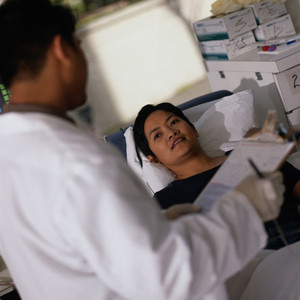Researchers from the US have found that poorer patients are more likely to use generics [1].
Patient sociodemographics and use of generics
Generics/Research
|
Posted 20/07/2018
 0
Post your comment
0
Post your comment

Patient characteristics or preferences that can influence use of generics include age, educational levels, perceptions about the disease, generic drug information, misconceptions and negative perceptions regarding generics. In fact, different studies have found that a significant proportion of the general public have negative perceptions about generics [2-4]. However, this evidence is largely qualitatively based and there are important inconsistencies in how various patient factors influence use of generics.
Therefore, in order to provide evidence of patient factors that influence use of generics the authors carried out a quantitative analysis of studies that included such data. They systematically searched the literature between January 2005 and December 2016 using PubMed, Web of Science, Ovid MEDLINE, Google Scholar and EBSCO IPA-MEDLINE for potentially relevant studies. The searches resulted in 11 articles on patient-level factors and six of these articles had sufficient information to conduct meta-analyses in the domains of patients’ gender, age, race/ethnicity and income.
Quantitative analysis indicated that no differences in use of generics existed between subgroups of patients defined by gender, age or race/ethnicity. However, patients with lower income, i.e. < 200% federal poverty level [FPL]) were more likely to use generics than those with higher income (≥ 200% FPL; pooled OR = 1.32, 95% CI = 1.15−1.52). Heterogeneity was high (I2 >75%) for all analyses but income.
The authors concluded that patients with lower income were more likely to use generics, whereas evidence was heterogeneous regarding an association between use of generics and gender, age or race/ethnicity. They therefore recommended that patients with higher incomes should be educated on generics to increase their use within that population.
Conflict of interest
The authors of the research paper [1] declared that funding for this study was made possible, in part, by the US Food and Drug Administration through grant U01FD005486. Hansen has provided expert testimony for Daiichi Sankyo and that there was no other conflict of interest.
Related articles
Addressing patient misconceptions about generics
Patients’ knowledge and perceptions about generics in Australia
References
1. Mishuk AU, Qian J, Howard JN, et al. The association between patient sociodemographic characteristics and generic drug use: a systematic review and meta-analysis. J Manag Care Spec Pharm. 2018;24(3):252-64.
2. GaBI Online - Generics and Biosimilars Initiative. Generics perceptions in patients, pharmacists and doctors [www.gabionline.net]. Mol, Belgium: Pro Pharma Communications International; [cited 2018 Jul 20]. Available from: www.gabionline.net/Generics/Research/Generics-perceptions-in-patients-pharmacists-and-doctors
3. GaBI Online - Generics and Biosimilars Initiative. Patient adherence and generics [www.gabionline.net]. Mol, Belgium: Pro Pharma Communications International; [cited 2018 Jul 20]. Available from: www.gabionline.net/Generics/Research/Patient-adherence-and-generics
4. GaBI Online - Generics and Biosimilars Initiative. Patients’ perceptions of HIV generics in France [www.gabionline.net]. Mol, Belgium: Pro Pharma Communications International; [cited 2018 Jul 20]. Available from: www.gabionline.net/Generics/Research/Patients-perceptions-of-HIV-generics-in-France
Permission granted to reproduce for personal and non-commercial use only. All other reproduction, copy or reprinting of all or part of any ‘Content’ found on this website is strictly prohibited without the prior consent of the publisher. Contact the publisher to obtain permission before redistributing.
Copyright – Unless otherwise stated all contents of this website are © 2018 Pro Pharma Communications International. All Rights Reserved.
Most viewed articles
The best selling biotechnology drugs of 2008: the next biosimilars targets
Global biosimilars guideline development – EGA’s perspective
Related content
Japan’s drug shortage crisis: challenges and policy solutions
Saudi FDA drug approvals and GMP inspections: trend analysis
Generic medications in the Lebanese community: understanding and public perception
Community pharmacists’ understanding of generic and biosimilar drugs: Lebanon case study
Generic medications in the Lebanese community: understanding and public perception

Generics/Research Posted 23/01/2024
Community pharmacists’ understanding of generic and biosimilar drugs: Lebanon case study

Generics/Research Posted 08/09/2023
The best selling biotechnology drugs of 2008: the next biosimilars targets








Post your comment